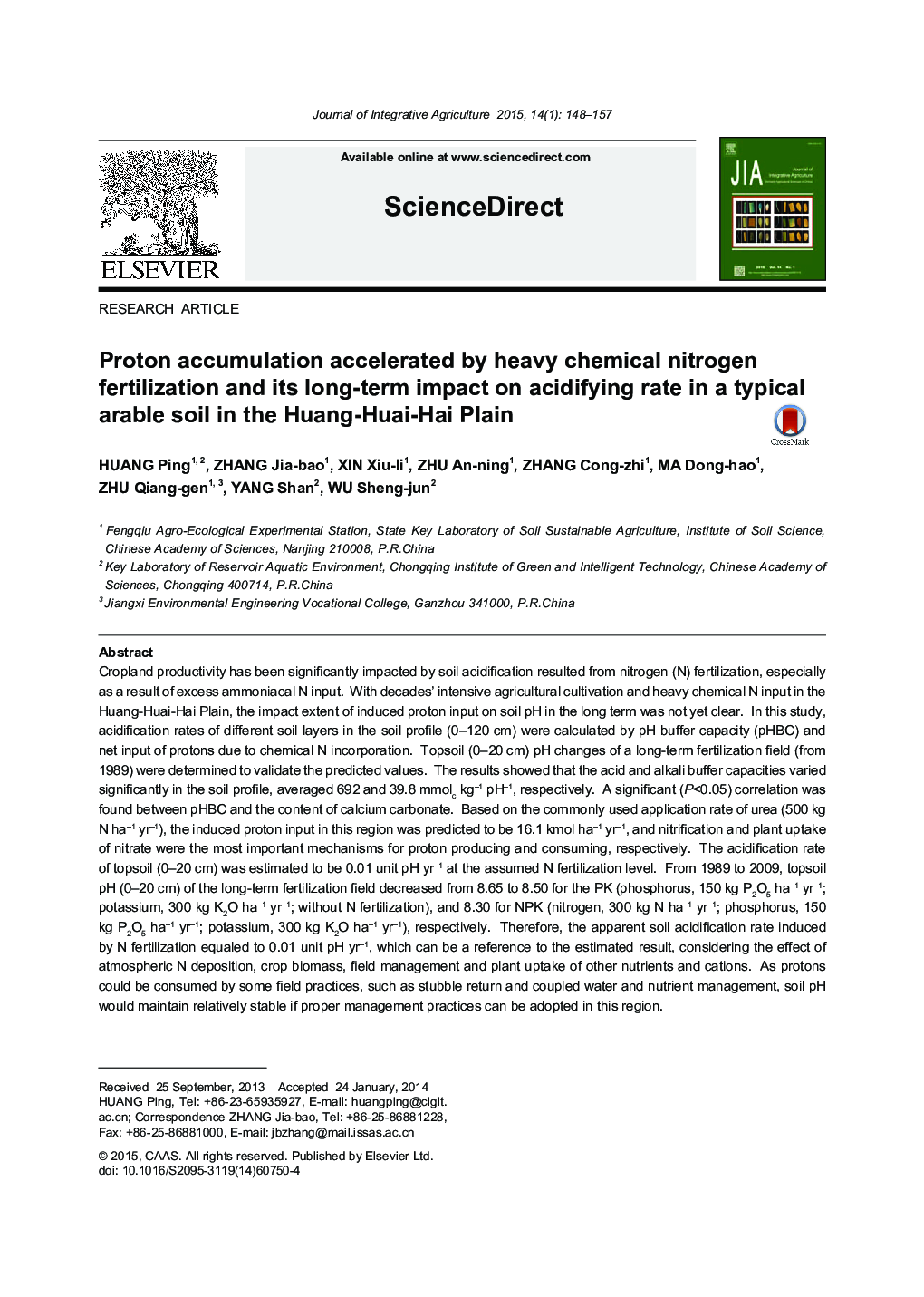| کد مقاله | کد نشریه | سال انتشار | مقاله انگلیسی | نسخه تمام متن |
|---|---|---|---|---|
| 4494418 | 1318713 | 2015 | 10 صفحه PDF | دانلود رایگان |
Cropland productivity has been significantly impacted by soil acidification resulted from nitrogen (N) fertilization, especially as a result of excess ammoniacal N input. With decades' intensive agricultural cultivation and heavy chemical N input in the Huang-Huai-Hai Plain, the impact extent of induced proton input on soil pH in the long term was not yet clear. In this study, acidification rates of different soil layers in the soil profile (0–120 cm) were calculated by pH buffer capacity (pHBC) and net input of protons due to chemical N incorporation. Topsoil (0–20 cm) pH changes of a long-term fertilization field (from 1989) were determined to validate the predicted values. The results showed that the acid and alkali buffer capacities varied significantly in the soil profile, averaged 692 and 39.8 mmolc kg−1 pH−1, respectively. A significant (P<0.05) correlation was found between pHBC and the content of calcium carbonate. Based on the commonly used application rate of urea (500 kg N ha−1 yr−1), the induced proton input in this region was predicted to be 16.1 kmol ha−1 yr−1, and nitrification and plant uptake of nitrate were the most important mechanisms for proton producing and consuming, respectively. The acidification rate of topsoil (0–20 cm) was estimated to be 0.01 unit pH yr−1 at the assumed N fertilization level. From 1989 to 2009, topsoil pH (0–20 cm) of the long-term fertilization field decreased from 8.65 to 8.50 for the PK (phosphorus, 150 kg P2O5 ha−1 yr−1; potassium, 300 kg K2O ha−1 yr−1; without N fertilization), and 8.30 for NPK (nitrogen, 300 kg N ha−1 yr−1; phosphorus, 150 kg P2O5 ha−1 yr−1; potassium, 300 kg K2O ha−1 yr−1), respectively. Therefore, the apparent soil acidification rate induced by N fertilization equaled to 0.01 unit pH yr−1, which can be a reference to the estimated result, considering the effect of atmospheric N deposition, crop biomass, field management and plant uptake of other nutrients and cations. As protons could be consumed by some field practices, such as stubble return and coupled water and nutrient management, soil pH would maintain relatively stable if proper management practices can be adopted in this region.
Journal: Journal of Integrative Agriculture - Volume 14, Issue 1, January 2015, Pages 148-157
